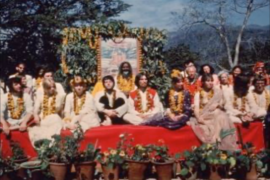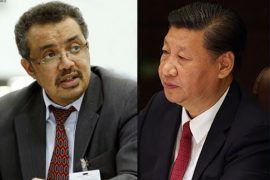Man, by virtue of an inexplicable program of nature or through his arduous biological evolutionary journey, has developed a penchant for the transcendent. He is fascinated by anything or anyone that seems to transcend the mundane and the ordinary. Bereft of rhyme or reason, he readily loses himself in something he perceives to be higher than himself in utter awe and admiration. In this context, the contemporary malady of celebrity worship finds its genesis from time immemorial to the tribal warriors in ancient societies at the dawn of civilisation.
Celebrity obsession is a form of parasocial relationship when the fan or follower expends excessive amounts of their time and energy, delving deeper into the personal lives, habits and events of their hero, with the respective celebrity totally unaware of their existence. The earliest, quintessential testament, remotely resembling the current maniacal celebrity worship, could be the wild adulations of the hysterical spectators crowded in the Roman Colosseum, cheering and hooting for their favourite gladiators, when they were mercilessly forced to engage in life and death duels. Their lives, sweat and blood were relegated to mere objects of entertainment. They invariably died poor and forgotten, in stark contrast to the celebrities of modern history.
In Stanley Kubrick’s movie 2001: A Space Odyssey, there is a legendary edit where a bone hurled in the air by a prehistoric ape transforms into a spacecraft. If a similar edit is performed on the mystery of celebrity affinity, jumping many millennia, passing the ancient and medieval world to the latter part of the twentieth century, we see a radical redefinition of it in commercial terms. During that time, especially in the United States, a few corporations and media companies discovered the possibility of objectification of celebrities with the explosion of television and print media. Marilyn Monroe and Judy Garland offer classic cases of such objectification. They made money zooming into their personal lives, showcasing their human vulnerabilities and frailties through interviews on television, cover stories on tabloids and grapevine on page 3 sections of newspapers. A sociocultural milieu that celebrates crank materialism is a breeding ground for celebrity worship.
Generally, people who were feted as celebrities of all ages until the advent of social media had real skills and talents, and their domain expertise was unmatched. They were warriors and larger-than-life figures like Alexander, Plato, Aristotle in ancient Greece to Charlemagne, Shakespeare, Michelangelo, and Pushkin, along with a host of other luminaries of the Renaissance and Enlightenment era. From the early to mid-twentieth century, revolutionary leaders like Lenin, Stalin, Marx, Mao, Gandhi, Nehru, and Hitler had avid supporters who could draw a sea of people to their public meetings. From the mid-twentieth century, notorious gangsters and the Mafia also found a place among the pantheon of celebrities that encompassed statesmen, singers, sportspersons, composers and movie stars. John Gotti, known as Dapper Don, Al Capone, Bugsy Siegel, Frank Costello, the five NewYork Crime families, the Outfit, became household names in the United States, and Pablo Escobar was revered as a modern-day Robinhood in his hometown in Medellin, Columbia. Their global stardom was facilitated by globalisation, consummated by rapid advancements in transport and telecommunications, reducing the world into a “global audience” in a “global village.”
Marlon Brando, John Wayne, Michael Jackson, Madonna, Pink Floyd, the Beatles and Rolling Stone received a cult following. Fans swooned over them; their personal and professional lives were religiously followed, deliberated and debated on mainstream media and news channels around the world. Ronald Reagan, Margaret Thatcher and Michael Gorbachev became the poster boys of global politics. The fame of Diego Maradona, Pele, Carl Lewis, Michael Jordan, Ayrton Senna, and Michael Schumacher transcended geographies, nations and races.
The media wasn’t fragmented then, and therefore, public attention converged on these stars through conventional dual-product media channels. They lived in stratospheric realms of their fan’s minds by virtue of their stellar accomplishments, charisma and unique talents. Fame and fortune became the sole prerogative of their heroes, beyond the aspirational reach of the common man. The masses were hypnotised by their fame, oblivious to the fact that they were ordinary mortals with far worse imperfections and weaknesses. To put things into perspective, “Diego” and “Maradona”, were two different people, on and off the pitch.
The term celebrity underwent a radical redefinition since the turn of the twenty-first century, especially after the first decade, when social media platforms exploded and proliferated. Facebook, TikTok, YouTube and Instagram had millions of users, and the subsequent network effects engendered a new phenomenon hitherto unknown. Fame became easy, though it did not necessarily mean success. With social media, anyone could become a celebrity or an influencer. Socialites like Kim Kardashians exploited this new wave to the fullest extent, resulting in millions sneak-peaking into their private lives, which they deliberately exposed to the world on the pretext of being transparent. Their die-hard fans are assuredly ignorant that their shows are produced and manipulated for mass following. They sell vulnerability to their audiences, who are equally vulnerable. The kindred souls in their fan base — mostly suffering from an identity crisis — respond affirmatively to their pretentious lives. Obsession, devoid of reason, gradually transforms into addictive behaviour.
Most social media celebrities and influencers have ruefully created unrealistic standards of existence. It has adversely impacted individuals whose identities are heavily influenced by the celebrities they worship, derailing their psychological development devoid of self-examination and exercising one’s critical faculties. ‘Con artists’ like the Tinder Swindler Simon Leviev and Theranos fraudster Elizabeth Holmes could now become overnight celebrities with their social media tweets patronised and discussed by millions of followers. Streaming companies like Netflix do a disservice to society and enhance their stardoms by making documentaries about these felons. Unlike in the past, the stigma of this age is that anyone without real talent can become famous with a microphone and an AI application. Excellence is thus undermined, and mediocrity is becoming the norm.
Since social media thrives on polarisation, sensationalism and disinformation, friction between spurious loyalists and critics among followers of controversial celebrities leads to protracted user engagements, translating into higher advertising revenues for the media behemoths. Engagement algorithms and attention-capture business models of social media companies reduce users into echo chambers and serve selective exposure of their favourite celebrity content, filtering out diverse news events and quality digital content.
The younger generation, especially the “Generation Z” cohort, is much more vulnerable to the rise in celebrity influencers and content creators on social media. Now, everybody wants to emulate the looks and success of Mr. Beast or Jake Paul — both American YouTubers — which instils unrealistic expectations in them. Millions of young people want to impersonate Adrianna Grande, Taylor Swift, Justin Bieber or Rihanna to seek some form of self-validation. In this process of reconfiguration of identities in accordance with their obsessed celebrity, they lead vicarious lives, bereft of a strong self-identity that is both unique and personal.
The nouveau riche celebrities have succeeded in feeding bursts of short dopamine-inducing content, so their young followers are misled into thinking that the singular reality and purpose of life is to be glamorous and enticing. The trending perfect and flawless Instagram Face and its unscrupulous promoters using Photoshop and Artificial Intelligence tools — to create stunning, unblemished and impeccable bodies — have resulted in eating disorders and body dysmorphia among their fans.
Lynn McCutchen and Mara Arguete, two renowned psychologists, have proposed an Absorption-Addiction model, a behavioural theory, where three levels of celebrity worship progressively degenerate into psychological disorders. The innocuous first stage is the entertainment-social level, which is just a fascination for the celebrity, driven purely by entertainment purposes. Joining a fan club and subscribing to their social media handles are explicit manifestations. The second stage regresses into an intense personal level, where obsessive-compulsive emotions about the celebrity overpower the fan and result in maladaptive behaviours. The third malignant level is borderline-pathological, where a celebrity is the centre of his moral and mental universe and strives to imitate the actions and emulate the habits of their favourite celebrity. Such disorders are often associated with depression, anxiety, dissociation, withdrawal symptoms, loneliness and mobile phone addiction. The victims could further deteriorate into neuroticism and narcissism. Though Celebrity Obsessive Disorder (COD) has still not been recognised as a clinical entity in the Diagnostic and Statistical Manual of Mental Disorders, Fifth Edition (DSM-5), it is categorised as an addictive and depressive disorder.
These varying levels of obsessive-compulsive syndromes are not generalisations of the masses who like a particular celebrity in a specific field. The enthrallment for the celebrity could be just a self-interest that has no association with narcissism. However, with social media addiction of the masses transcending age barriers, behaviours are increasingly modified to conform to obsessive traits, low tolerance levels, aggression and hostility to alternate views.
The” Cult Of Personality Syndrome” is another variation of celebrity worship, in which a group of people idealise a leader who propagates their religious and political views. Populist leaders like Donald Trump, Narendra Modi, Vladimir Putin, Kim Jong Un and Erdogan have a huge cult following, where their followers have completely surrendered their critical faculties and discernment to their beloved leader. These fanatical followers suffer from “Motivated Reasoning” or “Confirmance Bias”, where any evidence against their leaders’ malfeasance fails to persuade them to relinquish their fealty and hold them accountable for their wrongdoings.
Abraham Maslow, the American psychologist who created Maslow’s Hierarchy of Needs theory, has placed self-actualisation as the highest need of an individual. This takes prominence over other physiological, safety and self-esteem needs of man. Self-actualisation equates to self-transcendence that is essentially aspirational, where an individual attains the highest potential that provides enduring joy as opposed to fleeting pleasure. It is a spiritual dimension, and this transcendence is consummated through celebrity worship by an obsessive fan who experiences that elusive joy vicariously. Pouring milk over gargantuan cut-outs of matinee idols in South Indian states before movie releases is another form of psychological aberration, where the celebrity attains a demi-god status, conferred unabashedly by the frenetic fan base.
It has come to a stage where the world can no longer run without celebrities. From a humanitarian cause in Africa, from the World Economic Forum Summit in Davos to a symposium on mental health, celebrity attendance, either from the tinsel town or the sports world, has become woefully indispensable. The presence of Bollywood actresses Alia Bhatt and Deepika Padukone as keynote speakers on mental health and depression during the World Economic Forum India Summit in 2017 bears ample testimony to this malady. Baba Ramdev, a charlatan and self-imposed spiritualist, was invited as chief guest to a conference on cancer research at IIT Chennai in 2018, much to the chagrin of the medical fraternity. He had earlier claimed that cancer is a divine punishment for sins committed. One of the event’s sponsors, the reputed Anderson Cancer Center, the Texas-based research and treatment facility, sought to distance itself from the event — demanding the removal of its name and logo — for inviting India’s famed practitioner of pseudo-science. The disgruntled Baba subsequently had to pull out of the event due to the outcry from the scientific community.
Media is complicit in creating a celebrity culture, according to cultural historian Daniel Boorstin, who declared in 1961 that “The hero created himself; the media create the celebrity.” A celebrity is a mere chimaera, vulnerable and deluded by his popularity, and this mirage is imposed on people who rarely distinguish illusion from reality. If one’s personality is allowed to be redesigned by someone on the pulpit, on the pitch or on a silver screen, 77it impedes the development of autonomous and independent individuals capable of judging and deciding for themselves. In the 21st century, celebrity worship has retrogressed into mass deception.
-30-
Copyright©Madras Courier, All Rights Reserved. You may share using our article tools. Please don't cut articles from madrascourier.com and redistribute by email, post to the web, mobile phone or social media.Please send in your feed back and comments to [email protected]











